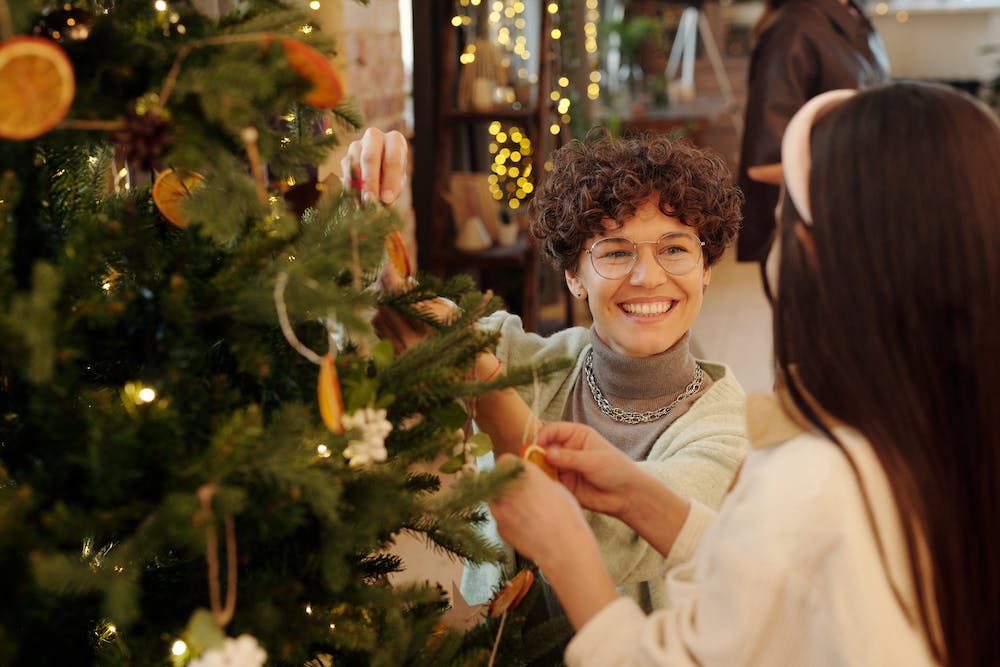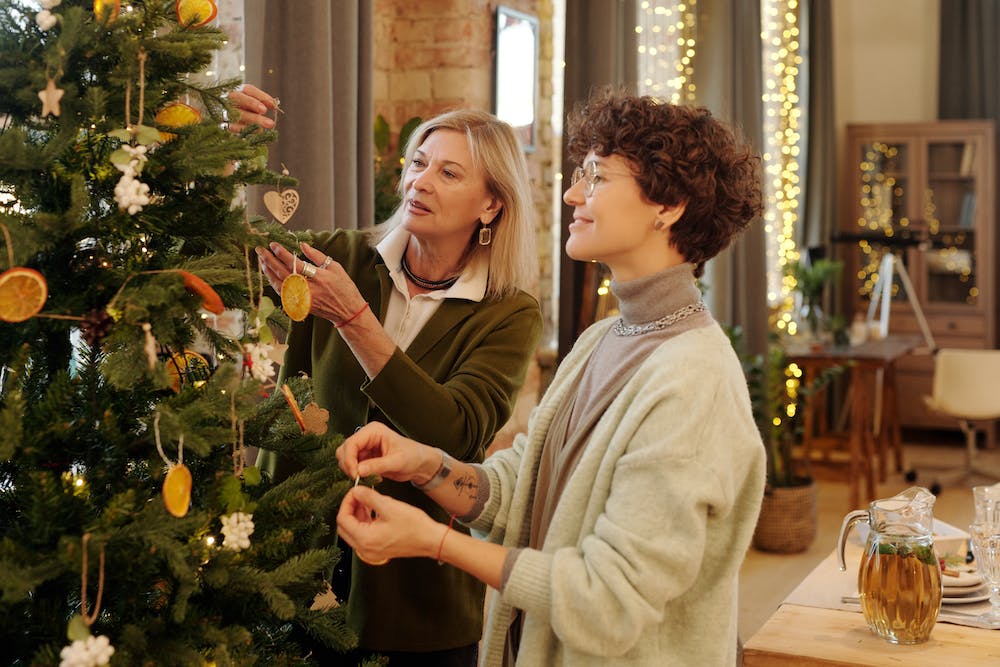As the festive season approaches, the quest for the perfect Christmas tree becomes a central concern for many. This age-old tradition brings about a yearly debate: should one opt for a real Christmas tree or an artificial Christmas tree? This article delves into the heart of this debate, exploring the multifaceted aspects that come into play when choosing between a real or artificial Christmas centerpiece.
The History of the Christmas Tree: Origins and Traditions
The tradition of the Christmas tree is deep-rooted in history, with origins tracing back to pagan customs. It was the Germans, however, who are credited with beginning the Christmas tree tradition as we know it today in the 16th century when devout Christians brought decorated trees into their homes. These real Christmas trees were adorned with candles, which were eventually replaced by Christmas lights. Over time, the tradition spread across the world, and the Christmas tree became a staple symbol of the holiday season.
The introduction of artificial Christmas trees began in the 19th century, initially made from feathers and later evolving into the variety of materials we see today. The artificial Christmas tree offered a convenient and reusable alternative, challenging the dominance of the real Christmas tree and setting the stage for the modern debate on which is more appropriate for the yuletide celebrations.
To Pine or Not to Pine: The Aesthetics of Real and Artificial Trees
The visual appeal of a Christmas tree can often be a decisive factor for many. A real Christmas tree brings with it an authentic charm and an organic, imperfect beauty that many find indispensable. The unique shape, the texture of the needles, and the natural variations in color contribute to the allure of a real Christmas tree.
On the other hand, an artificial Christmas tree offers a different kind of aesthetic value. The ability to choose from various styles, sizes, and colors—each year possibly different from the last—allows for a tailored holiday theme. These trees can be perfectly symmetrical, come pre-lit, and remain lush throughout the season, presenting a picture-perfect version of a Christmas tree that appeals to modern sensibilities.
Sentimental Value: The Emotional Connection to Christmas Trees
For many, the choice between a real or artificial Christmas tree is not just a matter of aesthetics, but also of emotional significance. A real Christmas tree may evoke cherished memories of family traditions, the excitement of selecting a tree, and the unmistakable fragrance that permeates the home, symbolizing the essence of Christmas for some. This emotional resonance can be a powerful force, compelling many to brave the cold year after year to keep this heartfelt tradition alive.
Conversely, an artificial Christmas tree can carry its own sentimental value, especially if it has been part of family celebrations for generations. It can represent stability and continuity, with each ornament having its place, and the familiarity of the setup can be a comforting ritual that signifies the start of the festive season.
The Practicality of Choice: Convenience vs. Tradition
Practical considerations often play a critical role in the decision-making process. The ease of setting up an artificial Christmas tree, free from the hassle of watering and cleaning up fallen needles, is a compelling argument for those with busy lives or limited space. The longevity of an artificial tree, with its cost spread over several years of use, can also be a financially prudent choice.
However, for purists, the real Christmas tree remains non-negotiable. Despite the effort involved in transport, setup, and disposal, the authenticity of a real tree is seen as an integral part of the Christmas experience. For these individuals, the ritual of choosing a real Christmas tree is as much a part of the holiday as the tree itself, and no amount of convenience can substitute for this tradition.

Cultural and Regional Influences on Christmas Tree Preferences
The decision between a real and an artificial Christmas tree often reflects deeper cultural and regional traditions. In areas where Christmas tree farms are common, the tradition of picking a real Christmas tree is not just a personal choice but a cultural event, with families partaking in annual trips to select the perfect tree. This tradition can be deeply ingrained, with the scent and sight of a real Christmas tree signifying the commencement of holiday festivities.
On the other hand, in urban environments or regions where natural trees are scarce, an artificial Christmas tree can be a more practical and accessible option. The evolution of artificial trees has made them more realistic and attractive, offering urban dwellers a convenient and long-lasting alternative that fits their lifestyle while still providing the festive atmosphere of a real Christmas tree.
The Aesthetics of Christmas Trees: Natural vs. Manufactured Beauty
The aesthetic appeal of a Christmas tree is subjective and varies greatly between individuals. Admirers of real Christmas trees often cite the unique and organic beauty of each tree, with its imperfections and distinct shape, as a crucial element of its charm. The experience of decorating a real Christmas tree, with its natural branches and textures, is seen as a fulfilling and organic process that cannot be replicated by an artificial counterpart.
Conversely, enthusiasts of artificial Christmas trees appreciate the uniformity and perfection that comes with manufactured products. These trees often offer a symmetrical shape and a perfect canvas for decorations, which can be particularly appealing to those with a keen eye for design. The variety of sizes, styles, and even colors available in artificial Christmas trees allows for greater personalization and can complement a wider range of aesthetic preferences.
The individual choice between a real or artificial Christmas tree may boil down to one’s personal definition of beauty and the value placed on natural versus manufactured aesthetics. Each option has its unique qualities that resonate differently with people based on their tastes, experiences, and the environment they grew up in.
Tradition Versus Convenience: The Christmas Tree Dilemma
The debate between choosing a real Christmas tree or an artificial Christmas tree is often a clash of tradition against convenience. For many, the real Christmas tree is a symbol of authenticity and nostalgia, a living piece of nature that is integral to the season’s traditions. The ritual of selecting a tree, feeling its needles, and smelling its fresh pine scent is irreplaceable for purists. These trees carry the essence of Christmas past, with each year’s tree adding to the tapestry of family memories.
In contrast, the artificial Christmas tree represents the modern, hassle-free approach to holiday decorations. The convenience of a one-time purchase, easy setup, and no need for watering or cleaning fallen needles appeals to the practical side of Christmas celebrators. The artificial Christmas tree can be seen as a rational choice in today’s fast-paced society, where time is precious and sustainability is valued. The allure of convenience is strong, and for those with busy lives, the benefits of an artificial Christmas tree—which include consistent shape, no risk of fire, and ease of decorating—often outweigh the sentimental values associated with a real Christmas tree.
The tension between tradition and convenience is palpable in this decision. While some may see the artificial Christmas tree as a symbol of the commercialization of the holiday, others view it as a necessary adaptation to contemporary life. The choice is deeply personal, reflecting one’s lifestyle, priorities, and individual concept of what Christmas means to them. This dichotomy encapsulates the evolving nature of holiday customs and how they adapt to the changing rhythms of society.










